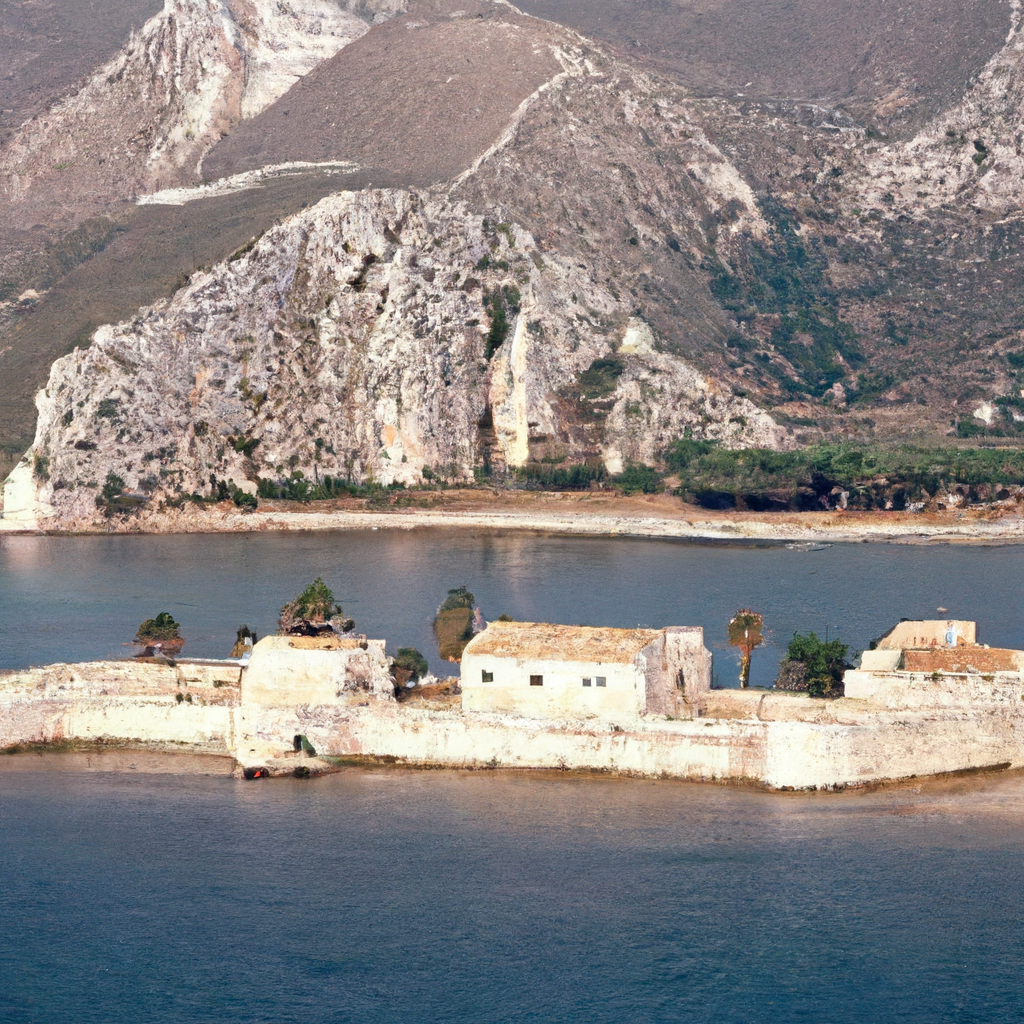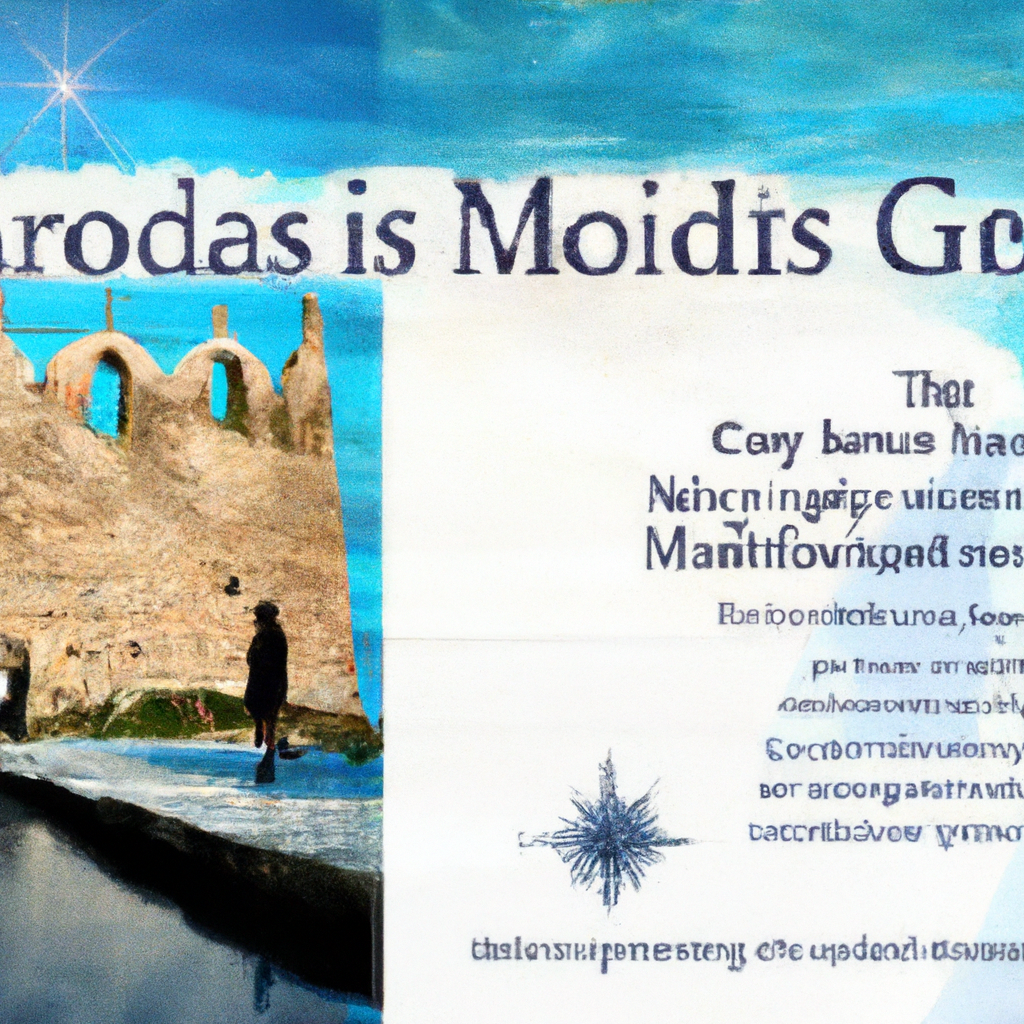Immerse yourself in the rich history of the Venetian fortresses that dot the stunning Greek islands. These majestic structures tell fascinating tales of power, conquest, and resilience, transporting you back to a time when Venetian naval prowess dominated the Mediterranean. From the mythical landscapes of Crete to the tranquil shores of Corfu, each fortress boasts its own unique story, inviting you to uncover the secrets that lie within their ancient walls. Join us on a virtual journey through time, as we explore the captivating narratives behind these remarkable symbols of Venetian grandeur.
1. The Venetian Rule in the Greek Islands
1.1 The Venetian Empire and its Expansion
The Venetian Empire was a powerful maritime force during the Middle Ages and Renaissance. Known for its seafaring prowess and trading influence, Venice extended its reach to the Greek islands in the 13th century. The Venetians established a significant presence in the region, leaving an indelible mark on the islands’ history and architecture.
1.2 The Construction of Fortresses
One of the notable legacies of Venetian rule in the Greek islands is the construction of magnificent fortresses. These fortifications served as defensive structures against pirates, rival city-states, and other external threats. The Venetians strategically erected fortresses throughout the Greek islands to protect their territories and maintain their dominance in the region.
1.3 Strategic Importance of the Greek Islands
The Greek islands held great strategic importance for the Venetians. Positioned along major trade routes in the eastern Mediterranean, these islands acted as crucial trading outposts for Venice. Controlling the islands ensured the Venetians a stronghold in the region, safeguarding their commercial interests as well as protecting their territories from potential invaders.
2. The Construction of the Fortresses
2.1 Architectural Features of Venetian Fortresses
Venetian fortresses in the Greek islands exhibit distinct architectural features that showcase the unique blend of Venetian and local influences. These fortifications often feature high, sturdy stone walls, imposing watchtowers, and strategically placed cannons. The architectural style combines elements of Venetian Gothic and Byzantine architecture, reflecting the cultural exchange between Venice and the Greek islands.
2.2 Materials and Techniques Used in Construction
To build these formidable fortresses, the Venetians utilized local materials such as limestone and marble. Skilled craftsmen from both Venice and the Greek islands employed various construction techniques, including the use of ashlar masonry and vaulted ceilings. The fortresses were designed to withstand prolonged sieges and provide a secure vantage point for the defending forces.

3. Fortresses as Defensive Structures
3.1 Layout and Design of Venetian Fortresses
The layout and design of Venetian fortresses in the Greek islands were carefully planned to maximize defensive capabilities. The fortresses were typically situated on elevated positions, taking advantage of natural terrain features such as hills or cliffs. The construction incorporated complex systems of walls, bastions, and towers, forming a defensive network that would make it difficult for attackers to breach.
3.2 Defense Strategies and Tactics Employed
The defense strategies employed by the Venetians in their fortresses varied depending on the specific location and potential threats. These strategies encompassed both proactive and reactive measures, including the use of cannons, artillery, and well-trained garrisons. Some fortresses also had underground tunnels or secret passages, adding an element of surprise and enhancing the defenders’ ability to repel attacks.
4. Chania and the Walls of the Firkas Fortress
4.1 History and Significance of Chania
Chania, located on the island of Crete, has a rich history that dates back to ancient times. The city experienced Venetian rule from the 13th to the 17th century, leaving a lasting impact on its culture, architecture, and traditions. Chania served as a major Venetian stronghold in the eastern Mediterranean and played a crucial role in the defense of the Greek islands.
4.2 The Firkas Fortress and its Role in Defending Chania
The Firkas Fortress, situated at the entrance of the Venetian harbor in Chania, served as a vital defensive structure. Built in the 17th century, the fortress protected the harbor and the city against potential invaders. It also housed the Venetian garrison and served as a headquarters for military activities. Today, the Firkas Fortress stands as a testament to Chania’s Venetian past and attracts visitors with its architectural grandeur and historical significance.

5. Nafplio: The Bourtzi Fortress
5.1 The Captivating Charm of Nafplio
Nafplio, located in the Peloponnese region, is a picturesque town known for its stunning architecture, vibrant culture, and romantic atmosphere. The town’s history is closely intertwined with Venetian rule, and remnants of that era can still be seen today. Nafplio’s Venetian fortresses, including the Bourtzi Fortress, contribute to the town’s captivating charm.
5.2 Construction and Purpose of the Bourtzi Fortress
The Bourtzi Fortress, situated on a small islet near Nafplio’s harbor, was built by the Venetians in the 15th century. The fortress, with its elegant octagonal shape and distinct architectural style, served as a defensive structure against naval attacks. Over the centuries, the Bourtzi Fortress has become an iconic symbol of Nafplio, attracting tourists with its scenic location and historical significance.
6. Rhodes: The Grand Master’s Palace and Fortifications
6.1 Historical Background of Rhodes
Rhodes, the largest of the Dodecanese islands, boasts a rich and diverse history. The island was under Venetian rule from 1309 to 1522, during which time the Venetians left their mark on Rhodes’ culture and architecture. Rhodes became a major center of the Venetian maritime empire and played a crucial role in the defense of the Greek islands.
6.2 The Grand Master’s Palace
The Grand Master’s Palace, located in the medieval city of Rhodes, is a testament to the wealth and power of the Venetian Knights of St. John. Built in the 14th century, the palace served as the residence of the Grand Master and a symbol of Venetian authority. With its impressive architecture and intricate decorative details, the palace stands as a prime example of Venetian influence in Rhodes.
6.3 The Impressive Defensive Walls of Rhodes
The defensive walls of Rhodes, widely regarded as one of the finest examples of medieval fortifications, surround the old town of Rhodes. These walls, built by the Knights of St. John during the Venetian period, protected the city from numerous sieges and attacks. Their intricate design included towers, moats, and imposing gates, making it nearly impregnable to invaders. Today, visitors to Rhodes can marvel at the grandeur and historical significance of these impressive fortifications.

7. The Mythical Aura of Corfu and the Old Fortress
7.1 Legends and Tales of Corfu
Corfu, with its lush landscapes and pristine beaches, exudes an enchanting ambiance enhanced by its rich mythology and legends. This Ionian island has captivated visitors for centuries with its mythical tales and historical treasures. The Venetian Old Fortress in Corfu serves as a reminder of the island’s mythical aura.
7.2 The Old Fortress and its Role in Safeguarding Corfu
The Old Fortress, perched on a rocky promontory overlooking the sea, has stood as a guardian of Corfu for centuries. Constructed by the Venetians in the 15th century, the fortress served as a defensive stronghold against invaders. Its strategic position and robust defensive features, including massive stone walls and strategically placed artillery, played a key role in safeguarding Corfu from potential threats.
8. Crete’s Fortress of Rethymno
8.1 Rethymno: A Historical Overview
Rethymno, located on the island of Crete, is a captivating town that combines the charm of Venetian and Ottoman influences. The town’s history can be traced back to ancient times, and its architectural treasures reflect the diverse cultural heritage that shaped Rethymno. The Venetian Fortress of Rethymno stands as a testament to Rethymno’s Venetian past.
8.2 The Venetian Fortress of Rethymno and its Purpose
The Venetian Fortress of Rethymno, constructed in the late 16th century, played a crucial role in protecting the town from potential invaders. The fortress, with its imposing walls, bastions, and gatehouses, showcased Venetian engineering prowess and served as a stronghold for the Venetian garrison. Today, visitors can explore the fortress and admire panoramic views of Rethymno from its elevated position.

9. The Enchanting Island of Zakynthos and its Fortress
9.1 Zakynthos: A Jewel in the Ionian Sea
Zakynthos, also known as Zante, is a picturesque island in the Ionian Sea renowned for its natural beauty and vibrant culture. The island’s diverse history includes periods of Venetian rule, which left an enduring impact on its architecture and heritage. The Zakynthos Fortress stands as a symbol of the island’s intriguing past.
9.2 The Zakynthos Fortress and its Historical Significance
The Zakynthos Fortress, situated on a hill overlooking the town of Zakynthos, was built by the Venetians in the early 16th century. The fortress played a crucial role in the defense of the island and served as a residence for the Venetian governor. Today, the Zakynthos Fortress offers visitors a glimpse into the island’s history and provides panoramic views of the surrounding landscapes.
10. The Marvelous Fortresses of Paros
10.1 Paros: An Island of White Beauty
Paros, a Cycladic island known for its pristine beaches and traditional whitewashed villages, is a popular destination for tourists seeking a true Greek island experience. The island’s rich history goes back to ancient times, but it was during the Venetian period that Paros witnessed the construction of marvelous fortresses.
10.2 The Fortresses of Parikia and Naoussa
Parikia, the capital of Paros, boasts a well-preserved Venetian fortress known as the Kastro. This fortress, constructed in the 13th century, served as a defensive structure for the island’s inhabitants. In Naoussa, a charming fishing village in Paros, the Venetians built a fortress to protect the village and its harbor. These fortresses stand as testament to Paros’ captivating blend of natural beauty and architectural heritage.
